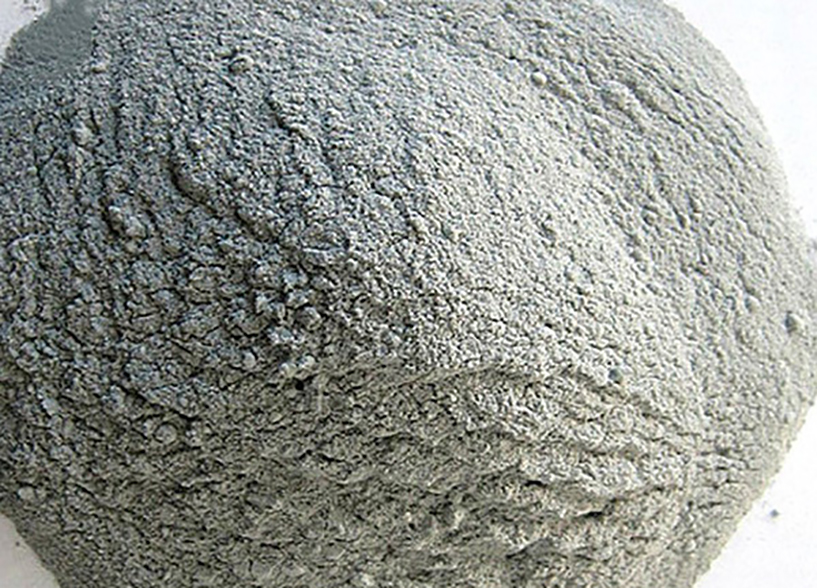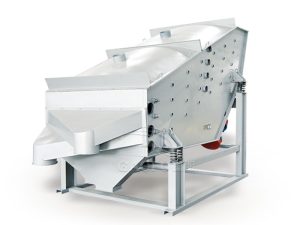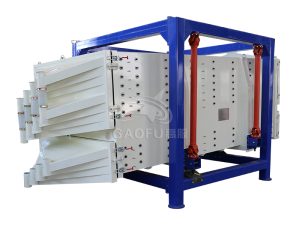
There are two types of dry powder mortar sieving, one is coarse sieving, that is, the impurities are removed, >5mm or >4.75mm on the sieve, and under sieve is the finished product, accounting for more than 95%. One is a fine sieve multi-layer classification, 4.75-3.35-2.36-1.18mm, we choose probability sieve mostly, single unit can achieve the maximum output.

Dry mortar introduction
Dry mortar refers to a granular or powdery form of dry-sieged aggregate (such as quartz sand), inorganic cementitious materials (such as cement) and additives (such as polymers), which are physically mixed in a certain proportion. It can be transported to the construction site in bag or bulk form. After mixing with water, the material can be used directly. Also known as mortar dry powder, dry mix, dry mix, some construction adhesives also fall into this category. Dry mortar plays a role in bonding, lining, protection and decoration in a thin layer in the construction industry. Construction and decoration engineering applications are extremely extensive.
Dry mortar production process
Dryer-feeder-coarse sieve-bucket elevator-probability sieve-distribution bin-metering spiral-automatic packaging
(1) Pre-treatment of sand:
Treatment divided into crushed sand and river sand. Broken sand treatment process: coarse material is transported from the sand mine, and then crushed, dried, (milled), sieved, stored. River sand treatment process: drying, screening. Some qualified manufacturers can directly purchase the finished sand, and then fill the cement, filler and additives into the storage bin or into the warehouse for storage;
(2) ingredients and weighing;
(3) mixing;
(4) Product packaging and transportation.
Dry mortar screening purpose:
One is a coarse sieve to remove impurities, and the other is a fine sieve multi-layer classification;
Effective analysis based on customer requirements:
1.The first question to consider is what is the purpose of the customer screening with a vibrating screenmachine?
There are two types of dry powder mortar sieving, one is coarse sieving, that is, the impurities are removed, >5mm or >4.75mm on the sieve, and under sieve is the finished product, accounting for more than 95%. One is a fine sieve multi-layer classification, 4.75-3.35-2.36-1.18mm, we choose probability sieve mostly, single unit can achieve the maximum output.
2.The size of the feed aperture?
The size of the feed aperture directly determines the model of the vibrating screen. If the feeding size is too large, the material flow rate is also large. If using small model vibrating screen, the material screening will be incomplete; if the feeding size is too small, the large model vibrating screen, it will result in a large part of the material not being evenly distributed on the screen surface;
Generally, the feed aperture size is less than 0.6mm, and the equipment of the linear sieve is generally selected;
The feeding size is between 80-150mm, generally 1000-1200mm equipment is selected; the machine model is generally not more than 1200mm during the selection process, so that it is more convenient to replace the screen and operate;
3.How much is the flow?
The flow rate is also the throughput, the amount of sieve that one set machine can deal with in an hour. This is calculated based on the aperture size of the material. The single probability sieve have large capacity, but it can’t sieve less than 0.6 mm. The linear screen has no limitation on the sieve hole, and the material coarse than 200 mesh can be sieved, but the output of the single unit is small. If the customer requires a production of more than 50 tons/h, the sieve hole is 1.2mm, we definitely recommended probability sieve;
Customer witness:
Combined gravity department
Shandong Yuanyou heavy Industry



Probability screen is a kind of sieve machinery which can make use of the principle of probabilistic screening. The sieve theory points out that, the stranded time of each object in its interior is opposite to its weight in the work. Through the actual experiment, particle size is much smaller than the hole diameter, it can quickly pass the screen surface, the more close to the hole diameter, the longer the stranded time, if the diameter of the two sides are close, the stranded time of the material is the longest, popular speaking, large particles stay time is long , small particles stay time is short.

From the point of view of the trajectory of the screen box, which is the screen box, the square swing screen is also called the arc screen. The vibration force generated by the drive device is an inertial force that changes in a certain direction around a fixed axis, and its essence is The reciprocating inertial force formed by the rotation of the eccentric wheel around the fixed axis. According to the structural characteristics and working principle of the square rocking vibrating screen, the screen surface is generally horizontal or slightly inclined (the inclination angle is 0°~5°). After the screen machine is started, the shaking body of the screen machine, namely the screen box, will reciprocate back and forth under the action of inertial force. The screen box drives the screen surface to periodically shake, so that the material on the screen surface will move with the screen box in a directional jumping motion. During this period, the physical materials smaller than the screen surface aperture fall to the lower layer through the screen holes and become under-the-screen objects. The materials larger than the screen surface aperture are discharged from the discharge port after continuous tumbling and jumping motion, thereby completing the screening work.